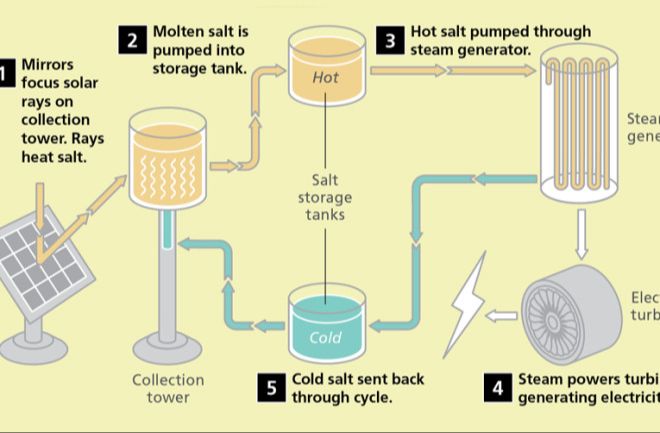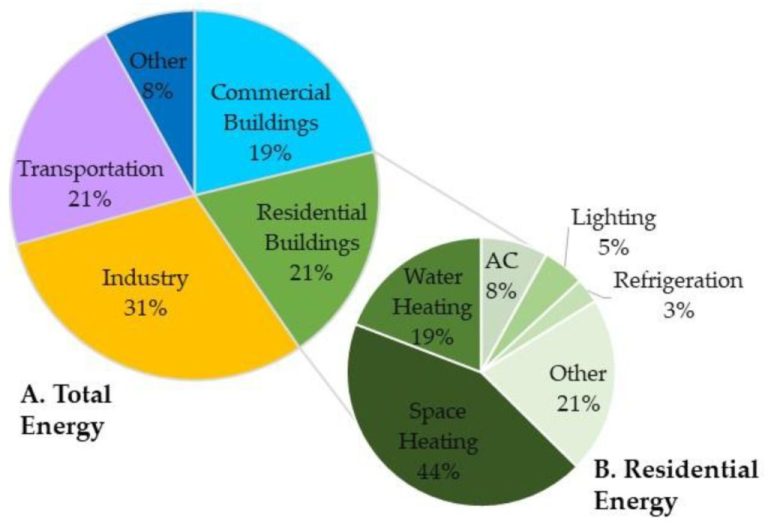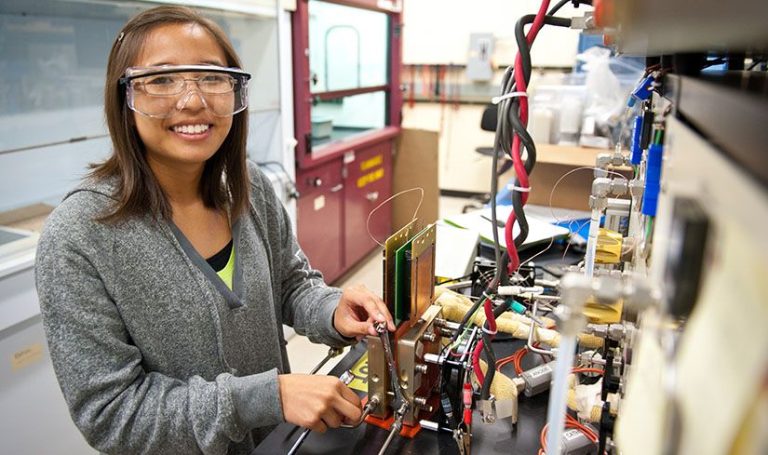Is There A Way To Store Renewable Energy?

As the world transitions to renewable energy sources like wind and solar power, energy storage is becoming increasingly important. Renewable energy sources like wind and solar are intermittent – they only generate energy when the wind is blowing or the sun is shining. Energy storage provides a way to capture excess renewable energy when it’s generated and discharge it later when renewable resources are unavailable.
Without energy storage, periods of excess renewable energy generation would go to waste. And when renewable resources aren’t available, backup power from fossil fuels would be needed. Energy storage enables renewable energy to be used in a reliable, on-demand way – bridging gaps between renewable energy supply and energy demand. This integration is critical for transitioning to a grid dominated by clean energy and reducing reliance on fossil fuels.
In summary, energy storage is a crucial enabling technology for increasing renewable energy utilization, reducing curtailment and system waste, and maintaining reliability as more intermittent wind and solar generation comes online.
Batteries
Batteries are one of the most common ways to store renewable energy on the grid scale. Lithium-ion batteries in particular have become popular due to their high energy density, low self-discharge, and lack of memory effect. Major utility-scale lithium-ion battery storage projects have been deployed in recent years, like the 409 MW/900 MWh Moss Landing project in California (https://www.power-sonic.com/energy-storage-solutions/utility-scale-battery-storage/). Flow batteries are another promising grid-scale battery technology because they can be easily scaled up to store large amounts of energy by increasing the size of the electrolyte tanks.
Pumped Hydro Storage
Pumped hydro storage is a type of energy storage that relies on water and gravity to store energy. It works by using excess electricity to pump water from a lower reservoir to an upper reservoir. When electricity demand is high, the water is released from the upper reservoir back down to the lower reservoir to power hydroelectric turbines and generate electricity.
Pumped hydro is currently the largest-capacity form of grid energy storage available, representing around 95% of all storage capacity worldwide. There are over 300 pumped storage plants totaling around 150 gigawatts of capacity globally.[1]
The round-trip efficiency of pumped hydro storage ranges between 70-80%, meaning 70-80% of the energy used to pump the water uphill can be regained when the water is allowed to flow downhill. This makes it one of the most efficient storage technologies available.
One of the main advantages of pumped hydro is its scalability. It can be configured to store large amounts of electricity equivalent to the needs of entire cities and regions. The storage capacity is only limited by the size of the upper and lower reservoirs.
Pumped hydro also has a rapid response time. It can go from generating zero electricity to maximum output in just a few minutes, making it highly valuable for balancing electricity supply and demand on grids.
On the downside, building new pumped hydro plants requires specific terrain and substantial investment. However, many existing hydropower dams can be retrofitted for pumped storage at lower costs.
Compressed Air Energy Storage
Compressed air energy storage (CAES) is an approach for storing energy by using compressed air. During periods of excess electricity generation, the excess energy is utilized to compress air into an underground storage space such as a salt cavern or aquifer. The compressed air can then be released to drive a turbine to produce electricity when needed. According to the Compressed Air Energy Storage (CAES) page on ctc-n.org, CAES is good for load shifting, which involves storing energy during periods of low demand and utilizing that stored energy during periods of high demand.
The process works by using excess electricity to power an electric motor that drives a compressor. The compressor pressurizes air up to 1100 psi and stores it in an airtight underground cavern. When electricity is needed, the pressurized air is preheated using a natural gas combustor and released to power an expansion turbine connected to a generator for electricity production. The natural gas combustor accounts for 2/3 of the power output during generation mode. CAES allows efficient large-scale storage of energy from renewable yet intermittent sources like wind and solar power for later use when needed.[1]
Thermal Energy Storage
Thermal energy storage (TES) involves storing thermal energy by heating or cooling a storage medium so that the stored energy can be used at a later time for heating and cooling applications (1). TES allows energy to be captured when it is available and then used when needed. This enables better energy efficiency and integration of renewable energy sources like solar and wind. Some key mediums used for TES include:
Molten salt TES uses molten salt mixtures like sodium nitrate and potassium nitrate as the storage medium. The salts have a high heat capacity and are stable at high temperatures. In solar thermal power plants, molten salt can be heated by concentrated sunlight during the day. The hot molten salt is then stored and used to generate steam to produce electricity at night or during cloudy weather (2).
Ice TES utilizes ice as the storage medium, often ice made from water. Ice is produced at night when electricity prices are lower. The ice is then used for cooling during the daytime by melting it to provide chilled water. This helps reduce electricity demand during peak daytime hours (3).
Other thermal storage materials like stones, ceramics, and phase change materials are also being researched. The goal is to find cost-effective mediums that have suitable thermal properties for heating and cooling applications.
(1) https://www.energy.gov/eere/buildings/thermal-energy-storage
(2) https://www.nrel.gov/news/program/2023/exploring-thermal-energy-storage-solutions-for-energy-efficient-buildings.html
(3) https://www.danfoss.com/en/about-danfoss/insights-for-tomorrow/integrated-energy-systems/thermal-energy-storage/
Hydrogen Storage
Hydrogen can be produced through electrolysis using excess renewable electricity during peak production hours. The excess electricity is used to split water into hydrogen and oxygen. This hydrogen can then be stored and used later when electricity demand is high. According to the Fuel Cell & Hydrogen Energy Association, “Once produced, hydrogen can be used in stationary fuel cells or combusted in modified gas turbines to generate electricity when demand is high” (https://www.fchea.org/hydrogen-as-storage).
The main advantage of using hydrogen for energy storage is that it allows renewable electricity to be stored for longer durations. Hydrogen can be stored as a gas or liquid and used when needed. The Department of Energy states that “Storage of hydrogen as a gas typically requires high-pressure tanks (350–700 bar [5,000–10,000 psi]), while storage as a liquid requires cryogenic temperatures because the boiling point of hydrogen at one atmosphere pressure is -252.8°C.” (https://www.energy.gov/eere/fuelcells/hydrogen-storage).
Overall, hydrogen provides a flexible way to store excess renewable energy for long durations. The main challenges are developing efficient and cost-effective hydrogen production, storage, and usage systems.
Flywheels
Flywheels are mechanical devices that store energy in the form of kinetic energy, by spinning a rotor (flywheel) at a very high speed. They act like a mechanical battery, storing energy when the flywheel spins faster and releasing it when the flywheel slows down. Flywheels convert electrical energy into rotational kinetic energy and vice versa using a motor/generator.
Flywheels can rapidly store and discharge energy over long periods, making them ideal for smoothing out fluctuations in power generation from renewable sources like wind and solar. They are capable of high power for shorter durations (seconds to minutes) and have the advantage of a long lifespan with little degradation over thousands of cycles (Amber Kinetics).
Modern flywheels use advanced composite rotors and magnetic bearings to minimize friction and achieve very high speeds up to 60,000 rpm. Larger utility-scale flywheels can store up to 25 megawatt-hours of energy and provide frequency regulation services to the grid (World’s Largest Flywheel). Smaller systems can provide backup power for grid outages.
Supercapacitors
Supercapacitors, also known as ultracapacitors or electrochemical capacitors, are high-capacity capacitors that can charge and discharge quickly. As an energy storage solution for renewable energy, supercapacitors offer high power density and the ability to withstand frequent charge and discharge cycles (Zhang 2023).
Recent research at MIT developed a supercapacitor made from inexpensive materials like concrete and charcoal that can store electricity and discharge it as needed. The components are abundant, and the materials are versatile for large-scale production (MIT 2023).
Compared to batteries, supercapacitors have a higher power density, meaning they can charge and discharge more quickly. However, they have lower energy density, so they store less total energy per unit mass. By combining supercapacitors with batteries in an energy storage system, the supercapacitor can handle the rapid fluctuations while the battery provides longer-term energy storage (Fom Technologies).
Supercapacitors are well-suited for storing the intermittent energy from renewable sources like solar and wind. They can charge rapidly during energy surpluses and discharge to meet demand spikes when renewable output drops. With further development, supercapacitors have strong potential as a scalable, low-cost energy storage solution for renewable energy grids (Zhang 2023).
Superconducting Magnetic Energy Storage
Superconducting magnetic energy storage (SMES) stores energy in the magnetic field created by the flow of direct current in a superconducting coil that has been cryogenically cooled to a temperature below its superconducting critical temperature (Wikipedia, 2023). The superconducting coil has very low loss and can act as a large magnet, storing energy indefinitely.
When electricity is plentiful and cheap, it is used to charge the coil. The stored energy in the magnetic field can then be released back to the grid when needed by discharging the coil. The quick discharge capability of SMES systems allows them to stabilize power grids by instantly injecting power into the grid during any sudden dips in voltage or frequency (Sciencedirect.com, n.d.).
SMES systems have high power density, meaning they can release megawatts of power very quickly. They also have a fast response time. However, they currently have a relatively low energy density and can only store energy for short durations. Ongoing research aims to increase the energy density of SMES technology.
Conclusion
In summary, there are several promising options for storing renewable energy to enable a sustainable energy future, each with their own advantages and limitations. Batteries provide a mature storage technology, with lithium-ion being dominant currently but new chemistries on the horizon. Pumped hydro and compressed air storage allow storage at scale using geography or reservoirs. Thermal storage like molten salt can retain heat to run steam turbines when needed. Hydrogen production allows renewable energy to be stored as fuel for many applications. Flywheels and supercapacitors offer fast response times. Superconducting magnetic storage provides high efficiency and power output.
Looking ahead, research is ongoing into improving existing storage techniques and developing new ones. Several factors like efficiency, cost, environmental impact, and safety will determine which options see large-scale adoption. Storage capabilities will need to grow to support increasing renewable penetration and electrification across the economy. With the proper policies and investments, energy storage can enable the transition to an affordable, reliable, and sustainable energy system.






